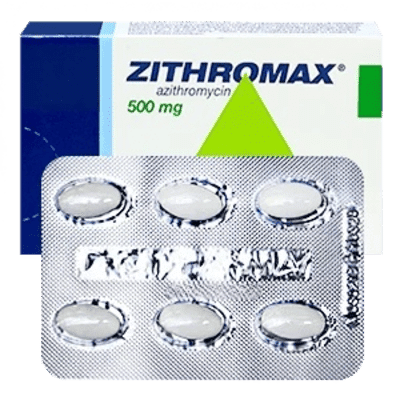Used Chloramphenicol eye drops for conjunctivitis. Improvement came literally on the third day. At first there were some unpleasant sensations after instillation, but overall I am happy with the result.

Chloramphenicol
Active ingredients: Chloramphenicol- Quality products
- Support 24/7
- Fast delivery
What is it?
Chloramphenicol is a broad-spectrum antibacterial drug used to treat a variety of bacterial infections. It was discovered in the mid-20th century and remains an important tool in the arsenal of doctors to this day, especially in cases where other antibiotics are ineffective. Chloramphenicol has a unique mechanism of action, blocking protein synthesis in bacteria, which prevents them from multiplying and leads to their death.
This drug can be used in tablet form, as well as in the form of an injection solution or eye drops, depending on the type of infection. It is important to note that Chloramphenicol is not used without strict indications, as it can cause serious side effects, including bone marrow suppression. For this reason, it is usually used only in situations where the benefits of use outweigh the potential risks, or when the infection is resistant to other antibiotics.
Composition
Chloramphenicol contains the active substance chloramphenicol, which provides the antibacterial effect of the drug. Depending on the release form, the composition may contain additional components that serve as auxiliary substances. For example, in addition to chloramphenicol, eye drops may contain components such as:
- Boric acid, which acts as an antiseptic and solution stabilizer.
- Water for injection, which is necessary to dissolve the active substance and ensure its sterility.
- Polyvinylpyrrolidone, which improves the solubility and stability of the drug.
Each release form of Chloramphenicol has its own composition, adapted to achieve the best therapeutic effect depending on the method of application.
How to use?
The use of Chloramphenicol depends on the form of the drug and the type of infection. It is important to strictly follow the doctors recommendations and instructions to achieve maximum effect and avoid side effects.
- Chloramphenicol tablets are taken orally, usually 3-4 times a day. The tablet should be washed down with a sufficient amount of water. The duration of treatment depends on the severity of the infection and is determined by the doctor, but is usually from 7 to 14 days.
- Eye drops are applied locally in the conjunctival sac of the affected eye. Usually 1-2 drops 3-4 times a day. After application, close the eye and gently press on the inner corner of the eye to prevent leakage of the drug.
- The injection solution is administered intravenously or intramuscularly, most often in a hospital setting. The dosage and frequency of administration depend on the severity of the infection and the general condition of the patient.
Before starting to use the drug, be sure to consult a doctor to correctly select the dosage and form of release.
How does it work?
Chloramphenicol has a potent bacteriostatic effect, which means that it inhibits the growth and reproduction of bacteria, but does not kill them directly. The drug affects bacterial cells by blocking protein synthesis, a key process necessary for their growth and reproduction. This occurs due to the binding of Chloramphenicol to the ribosomes of bacteria, which prevents the formation of new proteins and ultimately leads to the death of microorganisms.
Chloramphenicol is particularly effective against gram-negative and gram-positive bacteria, including dangerous pathogens such as Streptococcus pneumoniae, Haemophilus influenzae and Neisseria meningitidis. Its broad antibacterial action makes it an important choice in the treatment of severe infections such as typhoid, meningitis and rickettsioses, especially when other antibiotics have failed. However, it is important to consider that due to the possibility of resistance and serious side effects, its use should be strictly controlled.
Indications
Chloramphenicol is used to treat a variety of bacterial infections, especially when other antibiotics are ineffective or contraindicated. The main indications for use include:
- Meningitis is an inflammation of the membranes of the brain and spinal cord caused by bacteria.
- Typhoid and paratyphoid fever are severe infectious diseases caused by bacteria of the genus Salmonella.
- Rickettsioses are a group of infections transmitted through the bites of ticks, lice or fleas and caused by rickettsia.
- Eye infections, such as bacterial conjunctivitis, where the use of Chloramphenicol eye drops helps to effectively combat the pathogen.
- Abscesses and severe bacterial infections of soft tissues, where systemic antibacterial therapy is required.
- Pneumonia is an inflammation of the lungs caused by microorganisms sensitive to chloramphenicol.
Chloramphenicol is used only as prescribed by a doctor and in situations where the benefit of its use outweighs the possible risks associated with side effects.
Contraindications
The use of Chloramphenicol is contraindicated in some cases, as it can cause serious side effects or worsen existing diseases. The main contraindications include:
- Hypersensitivity or allergy to chloramphenicol or other components of the drug.
- Blood diseases such as aplastic anemia or other forms of bone marrow suppression, as the drug may worsen these conditions.
- Liver failure, as Chloramphenicol is metabolized in the liver and its use may lead to worsening of the condition.
- Pregnancy and breastfeeding - the drug can penetrate the placenta and into breast milk, which can harm the fetus or infant.
- Infancy up to 2 weeks, as there is a risk of developing gray syndrome, a potentially dangerous condition for newborns.
Before starting treatment, it is important to inform the doctor about all existing diseases and conditions to avoid possible complications. Chloramphenicol is prescribed only after careful assessment of the risks and benefits to the patient.
Side effects
Chloramphenicol may cause side effects that can range from mild to severe. Despite its effectiveness, the drug requires careful monitoring due to possible adverse reactions. The main side effects include:
- Bone marrow suppression, which may lead to aplastic anemia or leukopenia. This is one of the most serious complications, requiring regular blood monitoring during treatment.
- Nausea, vomiting and diarrhea are the most common gastrointestinal side effects.
- Allergic reactions such as rash, itching or swelling may occur in patients with hypersensitivity to the drug.
- Gray syndrome in newborns, characterized by low blood pressure, respiratory failure and a gray tint to the skin, is especially dangerous for infants under 2 weeks old.
- Headaches and dizziness may occur, especially with prolonged use or high doses of the drug.
If any adverse symptoms occur, stop using the drug immediately and consult a doctor. Chloramphenicol should be used with caution and under strict medical supervision.
Frequently asked questions
Chloramphenicol Reviews and Experiences
My doctor prescribed Chloramphenicol for pneumonia when other antibiotics failed. The drug worked great, the temperature went down on the second day. The only thing that worried me was the possibility of side effects, but fortunately there were none.
Used Chloramphenicol in tablets for typhoid fever. Although the treatment lasted almost two weeks, the effect was noticeable after a few days. The only downside was slight weakness, but overall I am satisfied.









